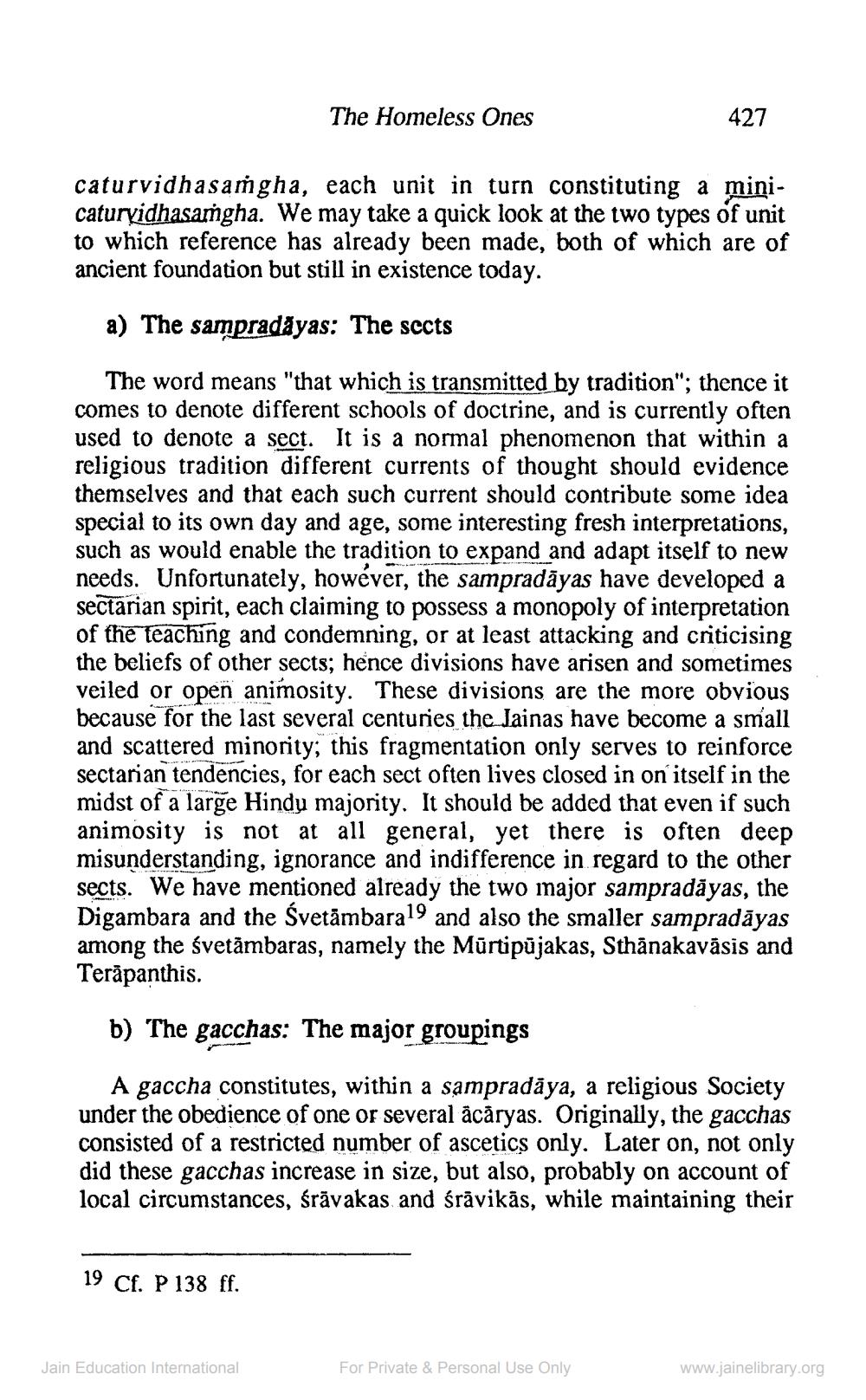________________
The Homeless Ones
caturvidhasamgha, each unit in turn constituting a minicaturyidhasamgha. We may take a quick look at the two types of unit to which reference has already been made, both of which are of ancient foundation but still in existence today.
a) The sampradayas: The sects
The word means "that which is transmitted by tradition"; thence it comes to denote different schools of doctrine, and is currently often used to denote a sect. It is a normal phenomenon that within a religious tradition different currents of thought should evidence themselves and that each such current should contribute some idea special to its own day and age, some interesting fresh interpretations, such as would enable the tradition to expand and adapt itself to new needs. Unfortunately, however, the sampradayas have developed a sectarian spirit, each claiming to possess a monopoly of interpretation of the teaching and condemning, or at least attacking and criticising the beliefs of other sects; hence divisions have arisen and sometimes veiled or open animosity. These divisions are the more obvious because for the last several centuries the Jainas have become a small and scattered minority; this fragmentation only serves to reinforce sectarian tendencies, for each sect often lives closed in on itself in the midst of a large Hindu majority. It should be added that even if such animosity is not at all general, yet there is often deep misunderstanding, ignorance and indifference in regard to the other sects. We have mentioned already the two major sampradayas, the Digambara and the Svetambara19 and also the smaller sampradayas among the śvetämbaras, namely the Mūrtipūjakas, Sthānakavāsis and Terapanthis.
19 Cf. P 138 ff.
b) The gacchas: The major groupings
A gaccha constitutes, within a sampradāya, a religious Society under the obedience of one or several âcāryas. Originally, the gacchas consisted of a restricted number of ascetics only. Later on, not only did these gacchas increase in size, but also, probably on account of local circumstances, śrāvakas and śrāvikās, while maintaining their
Jain Education International
427
For Private & Personal Use Only
www.jainelibrary.org




